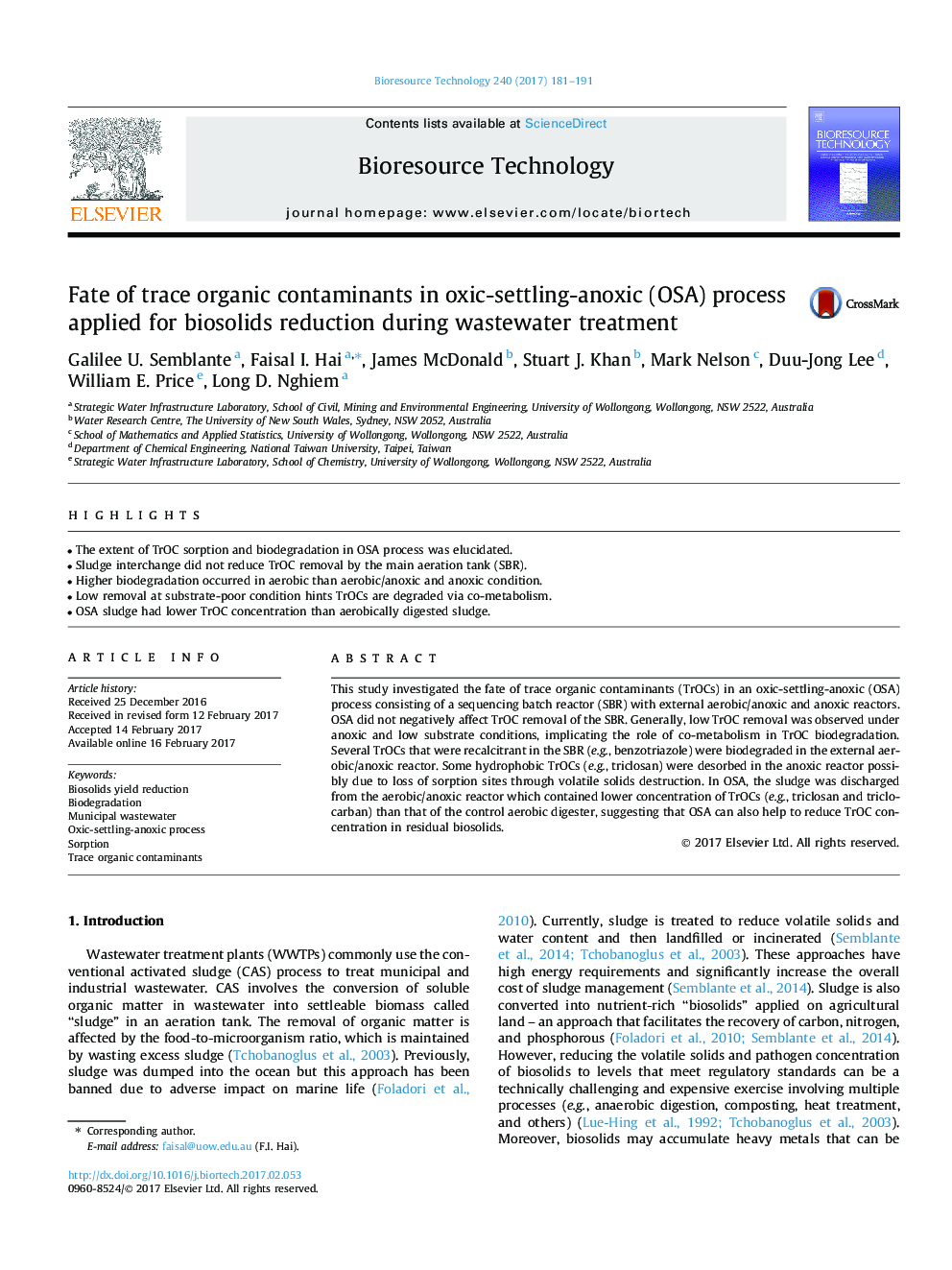| Article ID | Journal | Published Year | Pages | File Type |
|---|---|---|---|---|
| 4996743 | Bioresource Technology | 2017 | 11 Pages |
â¢The extent of TrOC sorption and biodegradation in OSA process was elucidated.â¢Sludge interchange did not reduce TrOC removal by the main aeration tank (SBR).â¢Higher biodegradation occurred in aerobic than aerobic/anoxic and anoxic condition.â¢Low removal at substrate-poor condition hints TrOCs are degraded via co-metabolism.â¢OSA sludge had lower TrOC concentration than aerobically digested sludge.
This study investigated the fate of trace organic contaminants (TrOCs) in an oxic-settling-anoxic (OSA) process consisting of a sequencing batch reactor (SBR) with external aerobic/anoxic and anoxic reactors. OSA did not negatively affect TrOC removal of the SBR. Generally, low TrOC removal was observed under anoxic and low substrate conditions, implicating the role of co-metabolism in TrOC biodegradation. Several TrOCs that were recalcitrant in the SBR (e.g., benzotriazole) were biodegraded in the external aerobic/anoxic reactor. Some hydrophobic TrOCs (e.g., triclosan) were desorbed in the anoxic reactor possibly due to loss of sorption sites through volatile solids destruction. In OSA, the sludge was discharged from the aerobic/anoxic reactor which contained lower concentration of TrOCs (e.g., triclosan and triclocarban) than that of the control aerobic digester, suggesting that OSA can also help to reduce TrOC concentration in residual biosolids.
